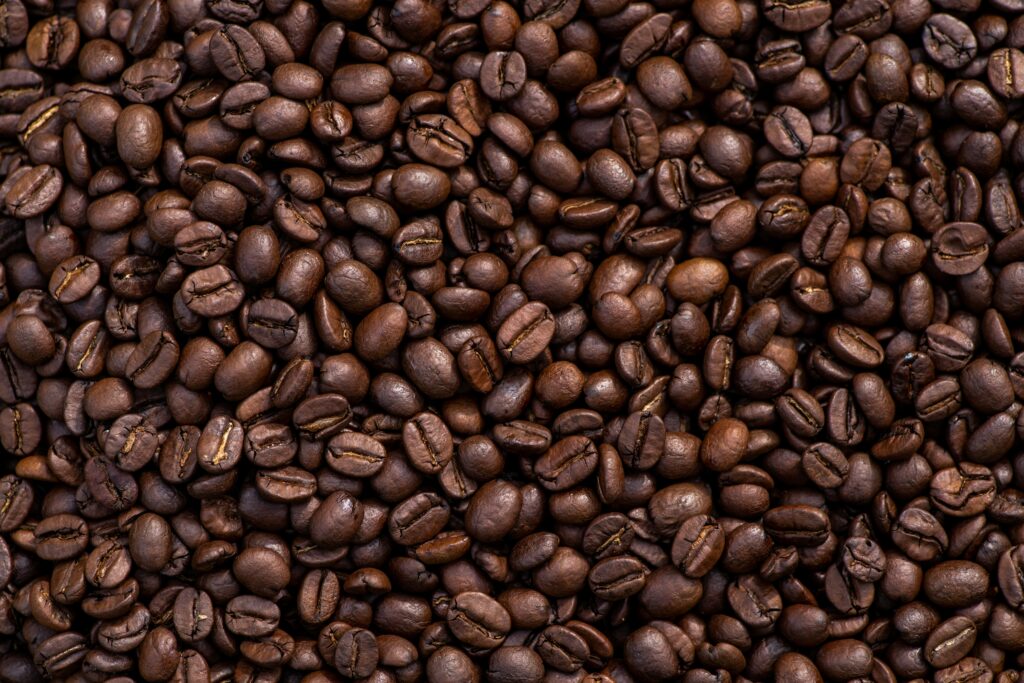During the roasting process, coffee beans undergo a series of chemical and physical transformations that shape the flavor and aroma of the drink. Although people often underestimate the complexity of this stage, it is during the roasting process that the coffee truly reveals itself, with its unique combination of bitterness, acidity and sweetness.
What happens when coffee is roasted?
Coffee beans begin roasting with a green color, characterized by a high concentration of water, chemical compounds, and sugars. As they are exposed to heat during the roasting process, these characteristics undergo transformations. The first major milestone in roasting is the Maillard reaction, which occurs between the sugars and amino acids in the beans, initiating the formation of caramelized flavors and the characteristic golden color of roasted coffee.
Another important phenomenon is caramelization, which occurs when sugars break down as the temperature increases. This process releases aromatic compounds that contribute to the sweeter, more complex flavor profile of coffee. In addition, the bitter and acidic substances in the beans begin to change, creating an explosion of new volatile compounds that are responsible for the aroma of coffee.
What happens inside coffee beans
- Pre-Roasting: The Initial Phase
Roasting begins with the beans absorbing heat and losing moisture. During the first phase, which can last from 2 to 4 minutes, the temperature inside the bean gradually increases. The bean begins to lose water, dropping from a water content of around 12-13% to a much lower level, usually below 5%. At this point, the coffee beans are still green and have an undeveloped flavor. The Maillard process begins, but is gentle.
- Medium Roast: The Maillard Reaction and the First “Explosion”
As the temperature rises, the famous first explosion of the coffee (or “first crack”) occurs. This happens around 196°C, when the bean begins to expand and burst due to the internal pressure of water vapor. This phase is crucial, as it is when the most complex flavors of the coffee begin to emerge, with the presence of sweeter and more caramelized aromatic compounds. Depending on the time and temperature, the coffee will begin to present notes of chocolate, nuts and fruits.
- Dark Roast: The Second Crack and the Development of Intense Flavors
The second crack occurs at around 440°F (224°C), when the compounds within the bean continue to break down, releasing more intense acids and bitter compounds. At this stage, the coffee acquires a darker hue, and the flavors of the bean become more robust and bitter. This is the stage where darker coffees are obtained, such as those used for espresso or Italian-style coffees.
How does heat affect the chemical composition of grains?
The roasting process profoundly alters the chemical composition of coffee beans. The increase in temperature triggers several reactions that affect both the flavor and the structure of the bean. Some of the most important changes include:
- Breakdown of chlorogenic acids: These acids present in green beans break down during roasting, which reduces the acidity of the coffee, making it milder in terms of flavor. However, inadequate roasting control can result in an excessively bitter flavor.
- Increase in volatile aromatic compounds: During roasting, more than 800 aromatic compounds are formed, which are responsible for the characteristic fragrance we smell when opening a bag of freshly roasted coffee. These compounds include aldehydes, ketones, acids and phenols, all essential for the final flavor.
- Caramelization of sugars: The natural sugars present in the beans begin to break down at higher temperatures, which results in the formation of new flavor compounds.
How the roaster influences the roasting process
There are several types of roasters, but they all have the common goal of ensuring uniform and controlled roasting. Controlling temperature, time and air flow are key factors in ensuring that roasting is carried out optimally.
SIATEC Brasil roasters use an exclusive roasting chamber system that ensures uniform roasting, allowing each bean to reach the perfect point to release all the flavor and aroma of the coffee.
In addition, these roasters are designed to increase energy efficiency. This means that, compared to conventional models, they can offer up to 3% more yield per bag of roasted coffee, which is a significant advantage for roasters looking to improve their productivity without compromising quality.
The importance of homogeneity in roasting
One of the biggest challenges in a traditional roasting process is ensuring that all the beans are roasted evenly. Even small variations in roasting temperature or time can affect the taste of the coffee, resulting in an inconsistent flavor profile. Under-roasted beans can be bitter or have a metallic taste, while under-roasted beans can result in a flat, flavorless coffee.
With a roasting chamber system, it is possible to ensure a precise and uniform roast. This is especially important for roasteries that handle large volumes of coffee, as it helps ensure that all the beans have the same flavor profile from the first cup to the last.
The impact of roasting on coffee flavor
Roasting is undoubtedly one of the most complex and fascinating processes in coffee production. The chemical transformations that occur during roasting are essential for the development of the unique flavors and aromas that make coffee such a beloved beverage around the world.
If you are looking to improve the quality and efficiency of your roasting process, contact us and find out how we can help you achieve exceptional results.

